Life Cycle
Thrips eggs are small and embedded into flower parts, making them hard to detect and often not identifiable. Larvae are white to yellow with fringed wings, appear similar to other Frankliniella thrips, and often are not identifiable. The pupal stages are non-feeding and not generally noticed because pupation often occurs out of sight in the soil. Most thrips that attack plants are yellow to amber in color. Adult thrips migrate as “aerial plankton” to new hosts during flowering each year.
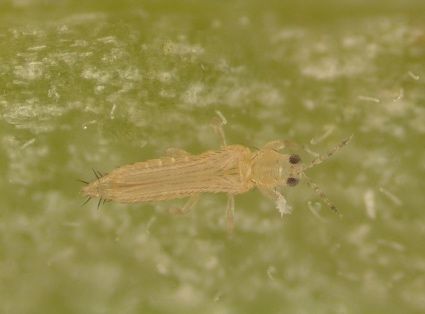
Credit: L. Buss, UF/IFAS
Damage
Thrips have specialized mouthparts that allow them to puncture plant material with one half of their mandible and then suck up plant material with the other half. These insects have a wide host range, making them particularly challenging to manage.
Thrips feeding removes the contents of cells 1–5 cells deep from the feeding site. These cells then die and can result in flowers being aborted. High populations of thrips can also reduce fruit set, particularly in Navel and Valencia orange.
If feeding occurs on the foliage or fruit, it may cause silvering. Feeding on the bloom can cause petal browning or malformed fruit. Common feeding damage includes scarring or bronzing, a ring near the top of the fruit or where fruit were touching in the grove.
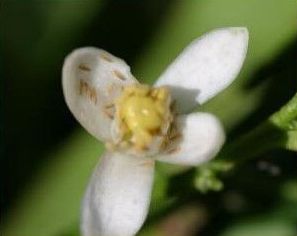
Credit: UF/IFAS CREC
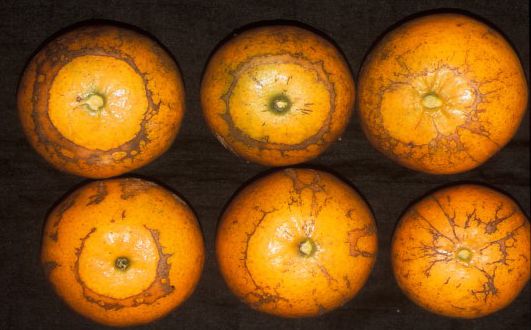
Credit: UF/IFAS CREC
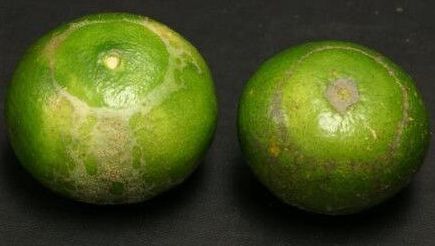
Credit: UF/IFAS CREC
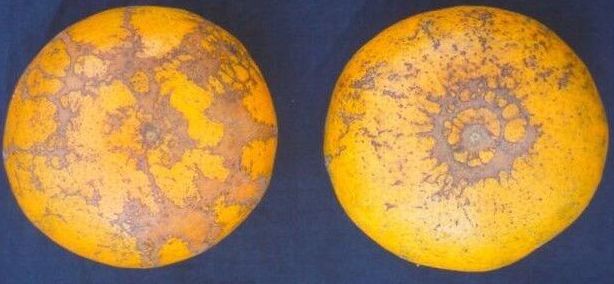
Credit: UF/IFAS CREC